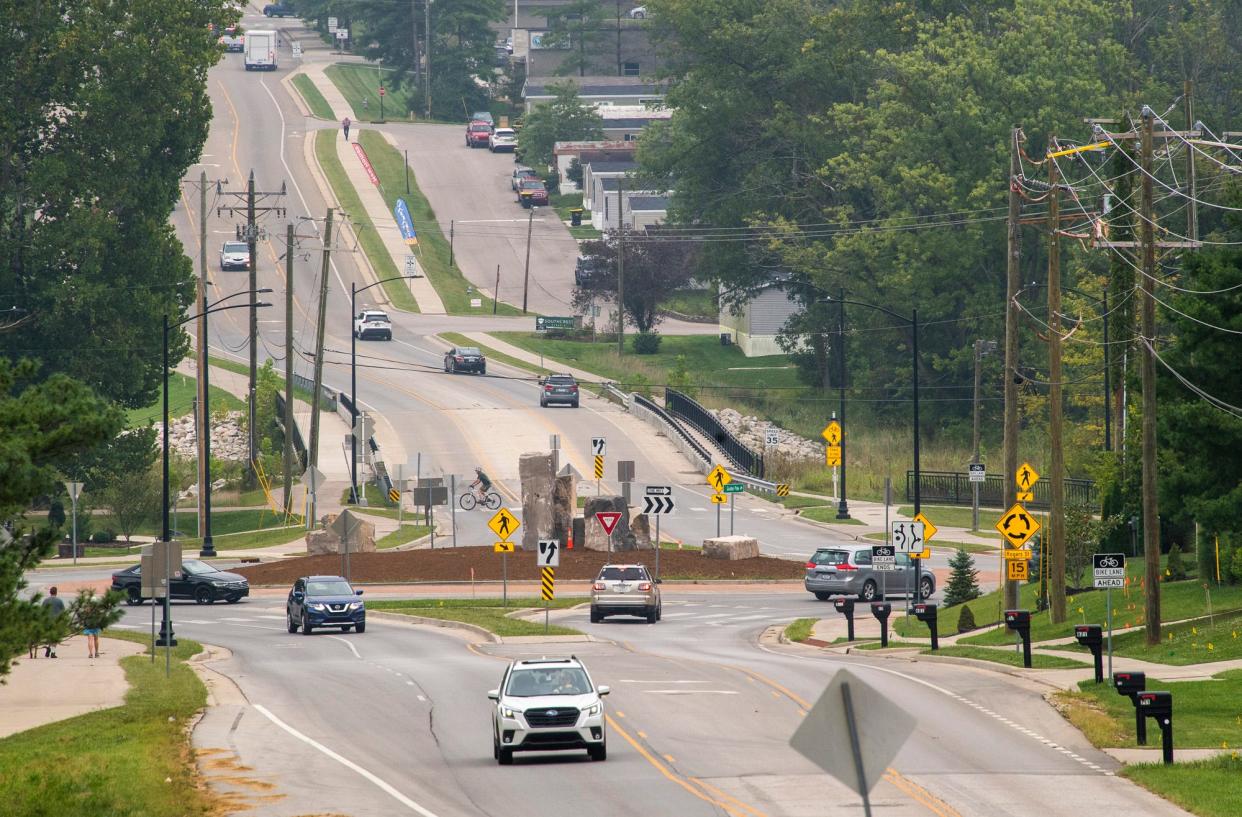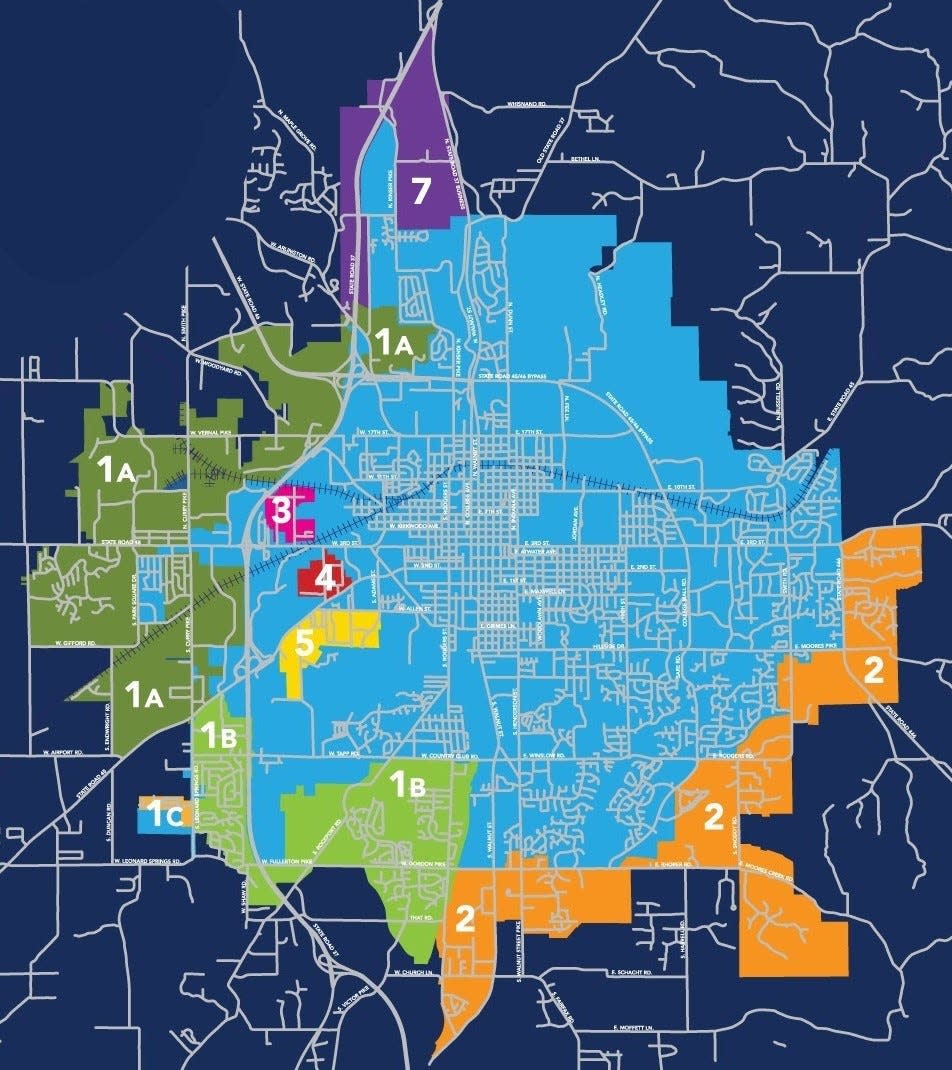Annexation trial for areas 1A and 1B in Bloomington has begun. What you need to know.

If Bloomington’s annexation cannot proceed, the entire region would suffer “negative long-term social and economic” harm, an attorney for the city told a judge Monday.
However, an attorney for annexation opponents said his side will prove that annexation would negatively affect property owners and the land should therefore remain unincorporated.
The trial, the outcome of which will affect nearly 8,600 residents on the city’s western edge, began Monday in the Charlotte Zietlow Justice Center on College Avenue.
Former Mayor John Hamilton was the city’s first witness. Current Mayor Kerry Thomson spent about an hour in the courtroom Monday morning, during opening remarks and part of Hamilton’s testimony. She, too, is expected to testify sometime this week.
Why is there a trial about Bloomington’s annexation?
The city of Bloomington wants to expand its borders. That would mean the geographic area over which the mayor and city council have control would expand. It also would mean residents who now live just outside of the city limits would become city residents. They would have access to city services, but also would have to pay more in taxes.
Many people opposed to being in the city filed a lawsuit to stop the city’s annexation attempt. In this week's trial, the city will have to explain to the judge why it should be allowed to annex the affected areas on the city’s west side. People who own property in those areas and are opposed to annexation will have to explain why they should be allowed to remain outside of the city limits.
The city's case is being handled by attorneys including Margie Rice, the city's corporate counsel, and Stephen Unger, of Indianapolis law firm Bose McKinney & Evans. Annexation opponents are being represented by William Beggs and Ryan Heeb, of Bloomington law firm Bunger & Robertson.
How did Bloomington’s annexation trial come about?

The city of Bloomington in 2017, under Hamilton, planned to expand its boundaries. The state legislature interrupted the plan, but the Indiana Supreme Court later said the legislature’s interruption violated the state’s constitution. Hamilton continued the process in 2021 and initially called for seven areas on the city’s edge to be annexed. The plan would have moved about 14,300 residents and 8,300 acres into the city limits.
Hamilton has said he views the annexation as a way to “right-size” the city. In court Monday, he said the city had expanded its borders routinely throughout the last few decades but stopped in 2004 — even though the city kept growing. Hamilton described the current annexation as a “catch-up” annexation that was larger than normal and likely would be followed in future years by smaller annexations.
Affected property owners in the areas targeted for annexation had the opportunity, in a quasi election, to vote whether they wanted to get annexed. If enough property owners voted against annexation, they could stop the city’s efforts altogether. If opponents met a lower threshold, they won the right to challenge the case in court. That’s what happened with property owners who live in Areas 1A and 1B, whose trial began on Monday.
The votes are in: Bloomington annexation fails in 5 of 7 areas; outcome on west, southwest sides unclear

How long will the Bloomington annexation trial last?
The trial is expected to last five days.
When will there be a verdict on Bloomington’s annexation trial?
Rice, the city's corporate counsel, and Margaret Clements, who heads a nonprofit of annexation opponents, said they do not expect a ruling for a while. Both said they expect Judge Nathan Nikirk to take the matter under advisement at the end of proceedings and issue a ruling at a later date.
If the judge finds the city has made its case, he could rule that annexation should proceed. On the flip side, if he determines that the city has not made its case, he could rule that Areas 1A and 1B remain outside of the city.
Complicating matters further is a second annexation-related lawsuit that could turn the outcome of this week’s trial on its head. In that case, the city is challenging a 2019 state law that made the city’s annexation attempt much more difficult. The city again is claiming that the state’s action was unconstitutional. That case also is ongoing.
Boris Ladwig can be reached at bladwig@heraldt.com.
This article originally appeared on The Herald-Times: Arguments begin in Bloomington annexation trial for city's western edge
